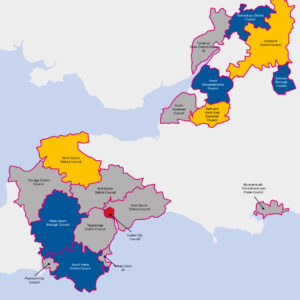Back to School, Parliament:
MPs are back and raring to go as today they return to Parliament after the summer recess. Refreshed, re-energised – determined. Westminster will be the setting of a theatrical display of (dis)loyalty, collusion and opportunity. Chaos looms and uncertainty is yet again the main descriptor of UK politics. So, in the first week of Parliament let’s look at what might happen.
Backbenchers aim to take control:
On Monday 2nd September, senior Labour MP Hilary Benn tweeted the much-awaited strategy of the remain leaning MPs. According to Benn, the ‘purpose of the Bill is to ensure that the UK does not leave the European Union (EU) on the 31 October without an agreement, unless Parliament consents.’ The Bill requires the Prime Minister to accept an extension of the Brexit deadline to January 2020, unless Parliament votes for a no deal exit. If the EU offers a longer or shorter extension Mr Johnson must bring the proposed extension back to Parliament and accept it, if it is voted through by Parliament. Controversy is born from the perception that this Bill would allow the EU to mandate Britain’s future near unilaterally, effectively tying the Prime Minister’s hands.
What is interesting perhaps, is that the Labour front bench have not signed this Bill. Instead, senior Labour backbenchers Stephen Gethins and Chris Bryant have. It has been co-signed by leading Conservative figures such as ex-Chancellor Phillip Hammond and ex-Justice Secretary David Gauke and features cross party support from the SNP, Liberal Democrats, Green Party, The Independent Group for Change and other independent members.
Pundits and betting agents have looked at the numbers, and with a majority of only one, Johnson looks set for defeat. It is calculated that somewhere between 10 to 20 Conservative MPs could rebel against the Government, voting for the Bill. Meetings between rebels and the Prime Minister are ongoing.
Show loyalty, or face deselection:
The announcement of the Rebel Bill has led to Number 10, and leading Government figures, to caution those who seem most likely to vote against the Government. The caution has come with the threat of deselection. The individual MP will have the ‘whip’ removed therefore becoming an independent in the House – no longer a member of the Conservative Party – and will prevented from standing as a Conservative at the next election. For some members, this will make the choice as to whether to vote for the Bill or not, harder. Others have taken this threat in their stride and have recommitted their intent to vote against the Government.
Those under threat include (source Robert Peston ITV): Phillip Hammond; Greg Clarke; David Lidington; Ken Clarke; David Gauke; Stephen Hammond; Antoinette Sandbach; Steve Brine; Ed Vaizey; Guto Bebb; Rory Stewart; Nicholas Soames; Dominic Grieve; Caroline Spelman; Oliver Letwin; Philip Lee; Sam Gyimah; Richard Harrington; Alistair Burt; Justine Greening; Sarah Newton and Anne Milton. This list is not conclusive, and some Conservatives may yet decide to change their position.
This strategy is high risk, especially as the Government only have a majority of one MP. Some figures have already secured backing of the local association such as Phillip Hammond and have expressed the possibility to take the matter legal if this strategy is pursued. Others have announced that they intend to stand down regardless at the next General Election, whenever that may be. Those with the intention to stand down are more likely to vote against the Government. It also raises questions over the possibility of an election, as it could change not only the arithmetic of the House of Commons, but also the motivation of members of the House.
An October Election:
Should the rebels succeed, the government have threatened to lay down a motion calling for an election to ensure the UK leaves the EU on October 31st, with or without a deal. If called, the expected date of the election is October 14th.
The problem is whether Parliament will give consent to an election at this time. If pursued, the Government will have two options in order to take their plight to voters. Firstly, by securing a 2/3rds majority in favour of an election, some 434 MPs. Whilst the SNP are expected to be supportive of this, some Labour and Conservative MPs may not, concerned that an election may fail to resolve the numbers issue in Parliament.
Predictions already believe a hung Parliament will be returned, in the case of an election. Labour MP concern stem from the potential lack of electability that the party leadership hold, having already lost three recent elections (2017 General Election, 2019 Local Elections and the 2019 European Parliament Elections).
The second choice is to pass an Act of Parliament, which will only require a majority of 1, which is arguably just as tentative especially as the current Government majority is 1. This would require every MP voting with their party and as recent votes in the House have proven, this is unlikely. Another issue is that the Act can be amended by MPs and subsequently the date can be changed by members. It is still unclear when the Government will choose to make their next move.
With tensions ever mounting and party division growing, the question from 2016 continues to remain unresolved.


